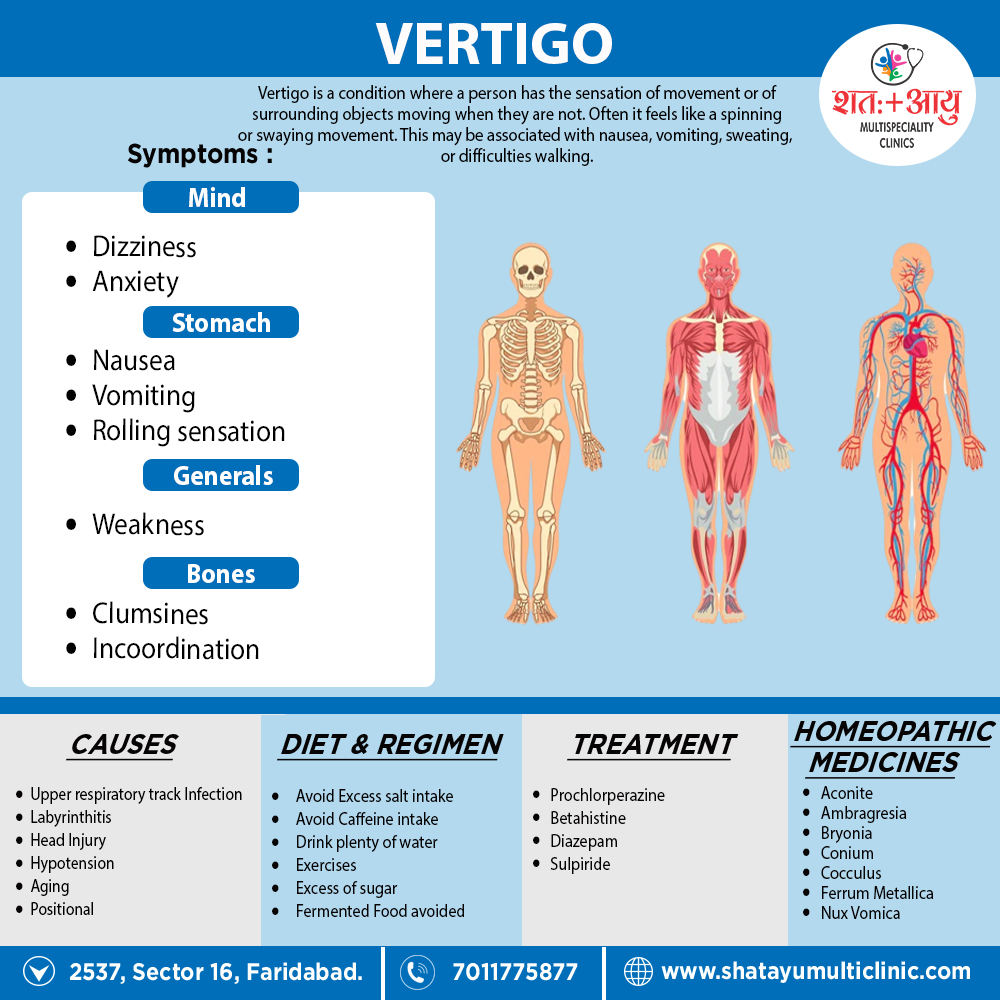Homeopathic Treatment of Vertigo
Argentum nitricum. [Arg-n]
Vertigo, with debility and trembling, is curable by this remedy when there is much mental confusion and a sense of expansion. It seems as if houses would fall on him when he is walking through the street. It also suits vertigo from diseases of the brain and eyes.
Ambra grisea [Ambr]
Is especially useful in nervous vertigo in old people.
[Acon]
The vertigo of Aconite is hyperemic or auditory. It is worse on raising the head or rising from a recumbent position.
Bryonia [Bry]
Has a gastric vertigo with nausea and disposition to faint, worse on rising from a recumbent position and on motion.
Bromine [Brom]
Has a vertigo worse when looking at running water.[3]
Cocculus [Cocc]
Has its principal action on the solar plexus, and vertigo which is connected with digestive troubles suites this remedy, and it develops into the neurasthenic type with occipital headache and lumbo-sacral irritation. There is a flushed face and hot head, worse sitting up and riding in a carriage; it is also worse after eating.
Cinchona [Chin]
Has a gastric vertigo associated with weakness or anemia. Also, vertigo from debility, loses of fluids, etc.
Causticum [Caust]
Is suitable to vertigo preceding paralysis. There is a tendency to fall forward or sideways; there is a great anxiety and weakness in the head. It corresponds, therefore, to the vertigo and weakness in the head. It corresponds, therefore to the vertigo of organic brain diseases.
Ferrum metallicum. [Ferr]
This remedy suits anaemic vertigo, which is worse when suddenly rising from a sitting or lying position. It comes on when going downhill or on crossing water, even though the water be smooth.
Iodine [Iod]
Is also suitable for old people who suffer from chronic congestive vertigo.
Nux vomica and Pulsatilla may be needed in gastric vertigo.
Phosphorous
says Dr. William Boericke, “displays great curative powers in every imaginable case of vertigo, especially in nervous vertigo when caused by nervous debility, sexual abuse, occurring in the morning with an empty stomach, with fainting and trembling.”
Rhus toxicodendron. [Rhus-t]
This remedy suits vertigo, especially in old people, which comes on as soon as the patient rises from a sitting position. It is associated with heavy limbs is probably caused by senile changes in the brain.
Natrum salicylicum. [Nat-sal]
This remedy is especially useful in auditory nerve vertigo, and other remedies for this condition are Chininum sulphuricum, Gelsemium and Causticum.
Theridion [Ther]
Has a purely nervous vertigo, especially on closing the eyes; it is accompanied with nausea and is greatly intensified by noise or motion,[3]

